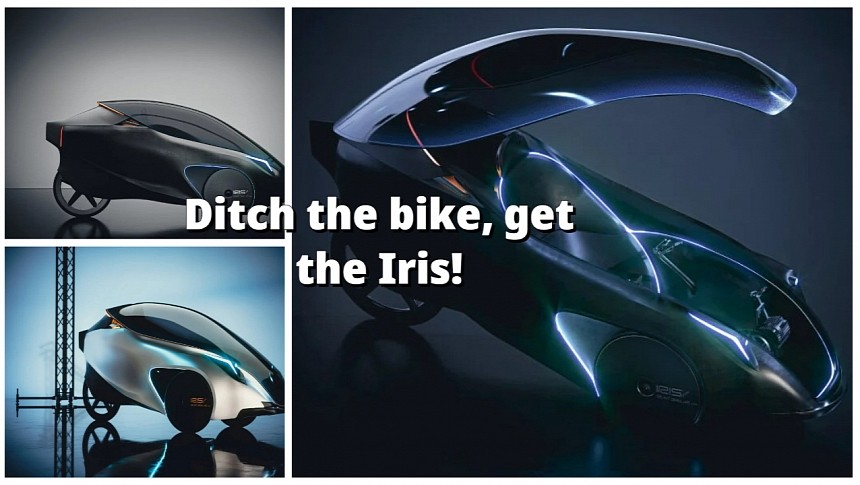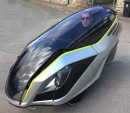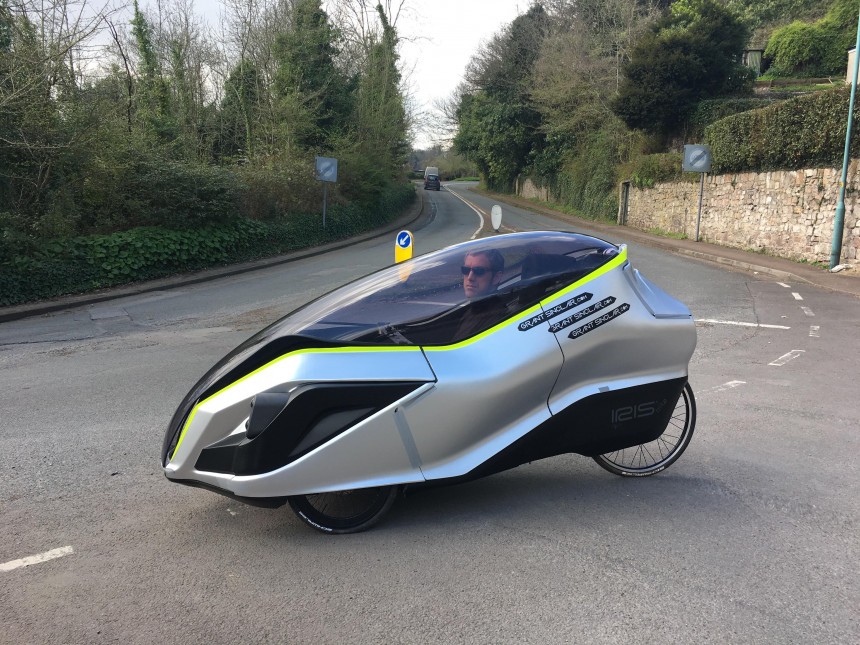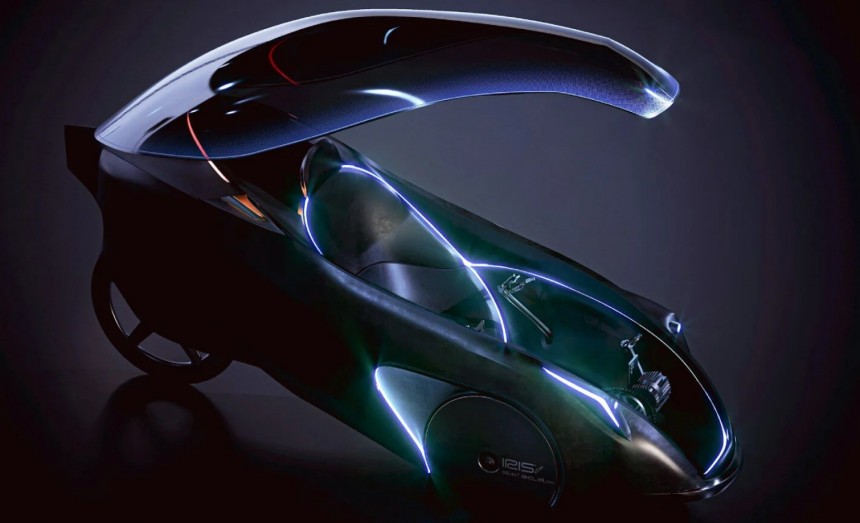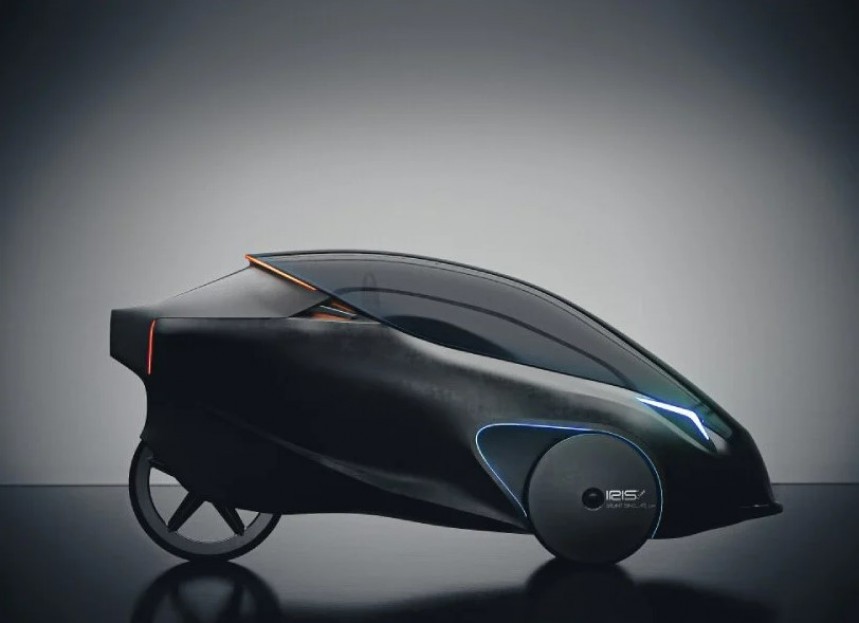Good things come to those who wait, and all that, but good things also take time. That one is not a golden rule, but it does seem to apply to the direct successor of the Sinclair C5 EV, the Iris e-Trike.
The Iris e-Trike was first announced in 2017 as the modern and direct successor of the incredibly famous but ill-fated Sinclair C5, considered one of the pioneers of the electric revolution shaping urban mobility today. You'd think the association with the catastrophic rollout of the Sinclair C5 and the trike itself, which was described as death on three wheels by the media at the time, is a bad idea. Unless you have Sinclair blood coursing through your veins.
Back in the 1970s, Sir Clive Sinclair, the inventor of the pocket calculator, the pocket TV, and color game consoles, started thinking about building a car that would make the daily commute cheaper, faster, and more fun. He'd pour many of his millions and more than a decade of his time into the idea, which led to the birth of the Sinclair C5 on January 10, 1985.
Dubbed an electric "car” ahead of the official presentation, the C5 turned out to be an electrically-assisted pedal trike with very poor visibility, terrible reliability, and exactly zero confidence-inspiring factor. It proved to be highly impractical, insanely unsafe, and poorly engineered. The media savaged it after the first test drives, and the business went under in less than a year, despite Sinclair's best efforts, which included having a 14,000-unit batch ready to ship out and an attractive price.
You'd be excused if you assumed no one would want to be associated with such a disastrous business idea, but that would mean negating Sinclair's merits with the C5. Though it was poorly executed and lacked minimal safety considerations, the C5 was revolutionary for the way it imagined a future for urban mobility that went beyond the passenger car and the bicycle, and did not rely on gas or sweat.
The C5 was at the wrong time, with the wrong technology and the wrong audience. That's why Sir Sinclair's nephew, Grant Sinclair, believes there's still potential in the idea of an electric trike like the C5. He calls it the Iris e-Trike, a direct descendant of the C5, which, however, adds whatever the C5 lacked to become a suitable alternative for personal mobility in the city.
Though the Iris should have started deliveries in the second half of 2017, it never did. That's not to say that the project is dead in the water. In fact, a prototype of the Iris is now on display at the National Motor Museum in Beaulieu in the UK for their MOTOPIA Exhibition, where it will remain until April 2024, when deliveries of the units should start. It brings several upgrades over the original 2017 version, including safety elements and tech to make the ride more comfortable.
The body is still next-gen Quantum Foam EPP with a chromoly steel trike chassis, but the transparent canopy is now made of aviation acrylic and has a de-mist function. There's also a new cooling system with HEPA air purifier available, so fumes and germs stay out of the cabin. LED headlamps, brake lights, and indicators will make the trike visible in traffic, though you can still use it on cycle paths if you opt for the lower-specced motor version.
The idea with the Iris is to offer protection from the elements and the exhaust fumes from cars in traffic, neither of which was possible with the C5. The enclosed cabin features a design inspired by racing helmets and helps with this while offering less drag in motion. The body will guarantee some protection in case of a crash – considerably less than even with the crappiest, oldest car that pops into mind, but many times more than the C5 or a standard e-bike.
Inside the cabin, you get pedals, an ergonomic upright bucket seat that can fold to create a lockable rear storage compartment, a display, a dock for your phone, a rearview camera, and an audio system. An RFID electronic key fob will open the trike, or you can choose to unlock it the old-school way with an actual key.
Legally, the Iris is still an electrically-assisted trike, so you operate it by pedaling and shifting through a bike 9-gear shifter, with the motor kicking in when you start pedaling. The Iris doesn't have a torque function but admittedly can climb hills easily, even of the steepest kind. Riding on carbon wheels with puncture-proof Tannus tires, it relies on disc brakes for stopping power.
Offered with motors up to 1,000W, the Iris promises a maximum speed of 30 mph (48 kph) and a range of 30 miles (48 km) on a single charge. We assume that high speed is only for the higher-specced model since the 250W one will probably be capped at 15.5 mph (25 kph), as is standard EU regulation.
Perhaps more surprising than the fact that the Iris e-Trike is still around is the fact that it's taking reservations. Base price is now a higher £4,999, as opposed to the original £3,999 (US$6,260 and US$5,000, respectively), and deliveries are estimated to kick off in the second part of 2024. It's still a long wait but a comparative drop in the bucket if you've been waiting for it since 2017.
Back in the 1970s, Sir Clive Sinclair, the inventor of the pocket calculator, the pocket TV, and color game consoles, started thinking about building a car that would make the daily commute cheaper, faster, and more fun. He'd pour many of his millions and more than a decade of his time into the idea, which led to the birth of the Sinclair C5 on January 10, 1985.
Dubbed an electric "car” ahead of the official presentation, the C5 turned out to be an electrically-assisted pedal trike with very poor visibility, terrible reliability, and exactly zero confidence-inspiring factor. It proved to be highly impractical, insanely unsafe, and poorly engineered. The media savaged it after the first test drives, and the business went under in less than a year, despite Sinclair's best efforts, which included having a 14,000-unit batch ready to ship out and an attractive price.
The C5 was at the wrong time, with the wrong technology and the wrong audience. That's why Sir Sinclair's nephew, Grant Sinclair, believes there's still potential in the idea of an electric trike like the C5. He calls it the Iris e-Trike, a direct descendant of the C5, which, however, adds whatever the C5 lacked to become a suitable alternative for personal mobility in the city.
Though the Iris should have started deliveries in the second half of 2017, it never did. That's not to say that the project is dead in the water. In fact, a prototype of the Iris is now on display at the National Motor Museum in Beaulieu in the UK for their MOTOPIA Exhibition, where it will remain until April 2024, when deliveries of the units should start. It brings several upgrades over the original 2017 version, including safety elements and tech to make the ride more comfortable.
The idea with the Iris is to offer protection from the elements and the exhaust fumes from cars in traffic, neither of which was possible with the C5. The enclosed cabin features a design inspired by racing helmets and helps with this while offering less drag in motion. The body will guarantee some protection in case of a crash – considerably less than even with the crappiest, oldest car that pops into mind, but many times more than the C5 or a standard e-bike.
Inside the cabin, you get pedals, an ergonomic upright bucket seat that can fold to create a lockable rear storage compartment, a display, a dock for your phone, a rearview camera, and an audio system. An RFID electronic key fob will open the trike, or you can choose to unlock it the old-school way with an actual key.
Offered with motors up to 1,000W, the Iris promises a maximum speed of 30 mph (48 kph) and a range of 30 miles (48 km) on a single charge. We assume that high speed is only for the higher-specced model since the 250W one will probably be capped at 15.5 mph (25 kph), as is standard EU regulation.
Perhaps more surprising than the fact that the Iris e-Trike is still around is the fact that it's taking reservations. Base price is now a higher £4,999, as opposed to the original £3,999 (US$6,260 and US$5,000, respectively), and deliveries are estimated to kick off in the second part of 2024. It's still a long wait but a comparative drop in the bucket if you've been waiting for it since 2017.
